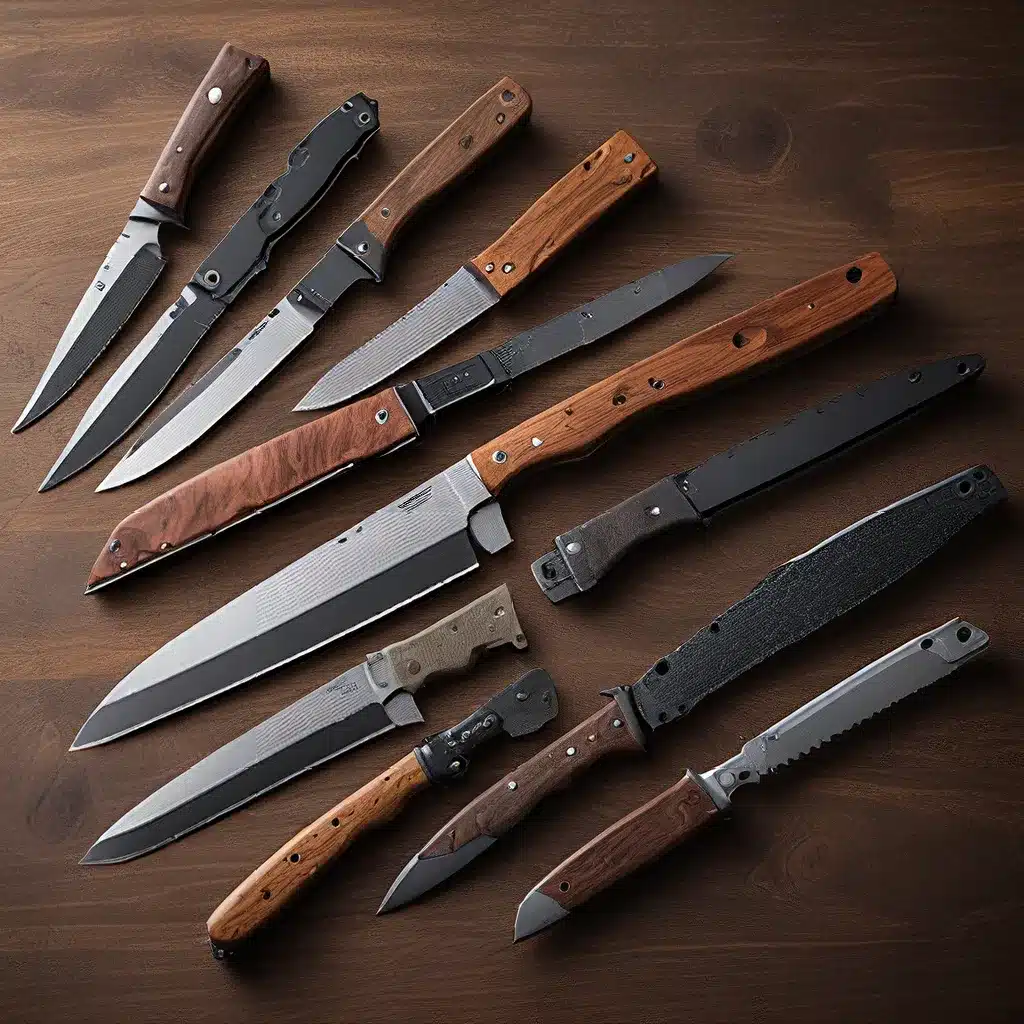
As a passionate knife enthusiast, I’ve always been fascinated by the incredible innovations that have shaped the world of blades. From the ancient Sumerians’ pioneering use of copper to craft spearheads and chisels, to the game-changing vegetable peeler that revolutionized modern kitchens, the story of knives is one of constant evolution and ingenious problem-solving.
Let’s dive into the remarkable innovations that have transformed how we interact with and rely on these versatile tools.
The Sumerian Metallurgical Marvels
The ancient Sumerians were true pioneers in the world of metalworking. Faced with a scarcity of natural resources like stone and timber, these ingenious people turned to clay as their primary building material, using molds to produce bricks on a large scale. But their real genius lay in their mastery of copper – a material they used to craft everything from spearheads and chisels to razors and dramatic art pieces.
According to the History.com article, the Sumerian metallurgists employed a sophisticated process, using furnaces heated by reeds and controlling the temperature with hand-operated or foot-powered bellows. This allowed them to produce a wide range of copper tools and objects, revolutionizing the way their civilization interacted with the world around them.
What’s even more impressive is that the Sumerians didn’t just stop at copper; they also developed a formal numbering system based on units of 60, which laid the groundwork for the mathematical calculations of later civilizations. This illustrates the Sumerians’ remarkable ability to take existing technologies and apply them on a much larger scale, transforming them into game-changing innovations.
The Humble Vegetable Peeler That Changed Everything
Fast forward thousands of years, and we find another remarkable innovation in the form of the humble vegetable peeler. As Fast Company reports, this unassuming kitchen tool has had a surprisingly outsized impact on the world.
The vegetable peeler was first patented in 1923 by a German inventor named Adolf Schneeberger. At the time, it was seen as a relatively minor innovation, a simple tool to make food preparation a bit easier. But as it gained popularity, the vegetable peeler started to transform the way we think about cooking and the role of technology in the kitchen.
One of the most significant impacts of the vegetable peeler was its ability to democratize cooking. By making it easier to prepare fresh fruits and vegetables, the peeler helped to break down barriers to home-cooked meals, empowering more people to embrace the joy of cooking. This, in turn, led to a greater appreciation for fresh, seasonal produce and a shift away from heavily processed foods.
But the vegetable peeler’s influence didn’t stop there. As the Chicago Tribune points out, the peeler also played a role in the development of the modern industrial kitchen, as chefs and food manufacturers realized the efficiency gains it could provide. This paved the way for the large-scale production and distribution of pre-peeled and pre-cut produce, forever changing the food industry.
Knives and the Future of Culinary Innovation
As I reflect on these remarkable knife innovations, I can’t help but wonder what other groundbreaking advancements are on the horizon. Perhaps the next generation of knives will incorporate advanced materials, ergonomic designs, or even smart technology to further enhance our culinary experiences.
One area that’s ripe for innovation is the intersection of knives and sustainability. As consumers become more conscious of their environmental impact, there may be a growing demand for knives made from recycled or renewable materials, or for products that are designed for longevity and easy maintenance.
Additionally, the ongoing research into advanced materials like ceramic and titanium could lead to the development of knives that are lighter, more durable, and easier to maintain. And who knows, maybe someday we’ll see knives with built-in sensors that can provide real-time feedback on food preparation or even suggest recipes based on the ingredients at hand.
The possibilities are truly endless, and I can’t wait to see what the future holds for the world of knives. One thing is certain: the innovations that have transformed our relationship with these essential tools will continue to shape the way we interact with and experience the culinary world.
So, as you chop, slice, and dice your way through your next meal, take a moment to appreciate the remarkable history and innovative spirit that has made these tools an integral part of our daily lives. The story of knives is a testament to human ingenuity, and I have a feeling the best is yet to come.


